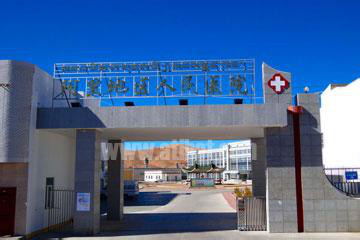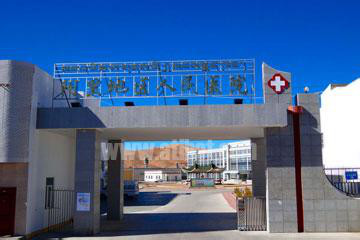By Hou Lulu from People’s Daily

The maternity and infant death rates in Southwest China's Tibet Autonomous Region have further dropped in recent years thanks to improved health care conditions, favorable policies introduced by the central government and rising health awareness in Tibet, a delegate from the plateau region said on the sidelines of the ongoing 19th National Congress of the Communist Party of China (CPC).
As an obstetrician working in Tibet, Tsering has witnessed the birth of more than 4,000 babies, and performed over 2,600 caesareans since she started her career in 1993. She had saved over 100 critically ill patients.
It’s challenging to be a doctor in the plateau region with an average elevation of 4,500 meters (about 14,800 feet), Tsering said. In Ngari Prefecture, her hometown, about 114,000 residents are scattered over 300,000 square kilometers, where the oxygen level is only about half that on the plain.
At one time a number of expectant mothers died at home because of difficult labor. “But now we try the best to drive to patients’ homes who have difficulty getting to the hospital, ” explained the delegate, adding that many locals are moved by their services.
Data shows that the mortality rate of Tibetan women during pregnancy, at or after delivery was halved from about 23 per 10,000 people in 2009 to 10 per 10,000 in 2015.
In addition, the mortality rate of infants in Tibet was reduced to 16 per thousand in 2015 from 21 per thousand in 2009.
When the plateau region was liberated in 1951, its maternal and infant death rates stood at 5,000 per 100,000 people and 430 per thousand respectively.
Tsering explained that such changes can be attributed to an improved living standard, the public’s stronger awareness of health, as well as the policies introduced by the Party and government in maternal and infant care, adding that more women now choose to give birth in the hospital as the government covers hospital delivery costs for mothers from farming and pastoral areas.
“The people in the past had a poor awareness of going to a hospital due to inadequate medical conditions and inconvenient traffic,” she added.
The doctors sent by other regions based on the government’s call also helped local medical teams improve, the delegate said.
She said that over 300 medical experts from Beijing, Shanghai, Chongqing and four other Chinese provinces have volunteered to offer counterpart medical aid to Tibet in two batches since 2015.
As a result of the program, outpatient visits and the surgeries in hospitals across Tibet in 2016 increased by 19.59 percent and 17.83 percent, respectively, compared to 2014, she said.
As an obstetrician working in Tibet, Tsering has witnessed the birth of more than 4,000 babies, and performed over 2,600 caesareans since she started her career in 1993. She had saved over 100 critically ill patients.
It’s challenging to be a doctor in the plateau region with an average elevation of 4,500 meters (about 14,800 feet), Tsering said. In Ngari Prefecture, her hometown, about 114,000 residents are scattered over 300,000 square kilometers, where the oxygen level is only about half that on the plain.
At one time a number of expectant mothers died at home because of difficult labor. “But now we try the best to drive to patients’ homes who have difficulty getting to the hospital, ” explained the delegate, adding that many locals are moved by their services.
Data shows that the mortality rate of Tibetan women during pregnancy, at or after delivery was halved from about 23 per 10,000 people in 2009 to 10 per 10,000 in 2015.
In addition, the mortality rate of infants in Tibet was reduced to 16 per thousand in 2015 from 21 per thousand in 2009.
When the plateau region was liberated in 1951, its maternal and infant death rates stood at 5,000 per 100,000 people and 430 per thousand respectively.
Tsering explained that such changes can be attributed to an improved living standard, the public’s stronger awareness of health, as well as the policies introduced by the Party and government in maternal and infant care, adding that more women now choose to give birth in the hospital as the government covers hospital delivery costs for mothers from farming and pastoral areas.
“The people in the past had a poor awareness of going to a hospital due to inadequate medical conditions and inconvenient traffic,” she added.
The doctors sent by other regions based on the government’s call also helped local medical teams improve, the delegate said.
She said that over 300 medical experts from Beijing, Shanghai, Chongqing and four other Chinese provinces have volunteered to offer counterpart medical aid to Tibet in two batches since 2015.
As a result of the program, outpatient visits and the surgeries in hospitals across Tibet in 2016 increased by 19.59 percent and 17.83 percent, respectively, compared to 2014, she said.
 Menu
Menu
 Maternity, infant mortality rates in Tibet drop further
Maternity, infant mortality rates in Tibet drop further
















